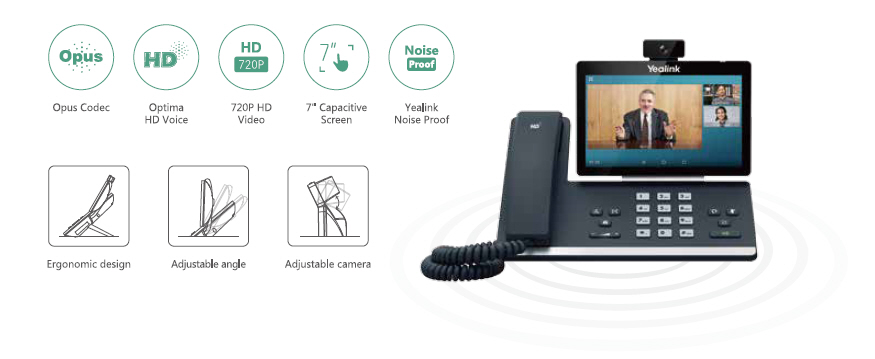Introduction
In the fast-paced world of business, communication is vital. A reliable telephone infrastructure can be the difference between success and failure. As organizations increasingly turn to technology for their communication needs, Voice over Internet Protocol (VoIP) phone systems have emerged as a leading solution. This article delves into how to reduce downtime risks with reliable VoIP telephone infrastructure, ensuring seamless communication and enhanced productivity.
What is a VoIP Phone System?
A VoIP phone system allows users to make voice calls using the internet instead of traditional phone lines. By converting voice signals into digital packets, these calls can be transmitted over data networks.
How Does a VoIP Phone System Work?
The core functionality of a VoIP phone system relies on several components:
Voice Transmitter: Converts voice into digital data. Internet Connection: Facilitates data transmission. VoIP Gateway: Connects traditional phone systems to VoIP networks. SIP Protocol: Manages communication sessions.Benefits of Using a VoIP Phone System
- Cost-Efficiency: Reduced call costs, especially for long distances. Scalability: Easily add or remove lines as needed. Advanced Features: Includes voicemail-to-email, call forwarding, and video conferencing.
Understanding Downtime Risks in Communication Systems
Downtime refers to periods when a system is unavailable or not operational. For businesses relying on communication tools, downtime can lead to significant economic losses.
Common Causes of Downtime in Traditional Systems
- Hardware Failures Network Issues Power Outages Maintenance Activities
The Impact of Downtime on Business Operations
Downtime can affect productivity through:
- Lost revenue due to missed calls Decreased employee morale Customer dissatisfaction
Reducing Downtime Risks with Reliable VoIP Telephone Infrastructure
Implementing a robust VoIP telephone infrastructure http://paxtonuawj981.wpsuo.com/voice-over-ip-explained-the-technology-behind-successful-communication can significantly mitigate downtime risks.
Key Components of Reliable VoIP Infrastructure
Quality Internet Connection: A stable and high-speed internet connection is paramount. Redundant Systems: Backup systems ensure continuity during failures. Regular Updates and Maintenance: Keeping software up-to-date minimizes vulnerabilities.Best Practices for Reducing Downtime Risks in VoIP Systems
To enhance reliability, consider these best practices:
- Employ Quality of Service (QoS) settings to prioritize voice traffic. Utilize failover solutions that redirect calls during outages. Monitor system performance regularly for early detection of issues.
Assessing Your Current VoIP Phone System
Evaluating your existing setup is crucial in identifying potential vulnerabilities.
Key Questions for Assessment
Is your internet connection reliable? Are you utilizing redundancy measures? How often do you perform maintenance?Identifying Areas for Improvement
Conduct an audit focusing on:
- Network capacity Hardware reliability User feedback
Choosing the Right VoIP Phone Systems for Your Business Needs
Selecting the appropriate system is essential for reducing downtime risks.
Factors to Consider When Choosing a VoIP System
Scalability: Can it grow with your business? Features: Does it offer essential functionalities like voicemail and call routing? Support Services: What level of technical support is provided?Popular VoIP Phone Systems in 2023
| Brand | Key Features | Pricing | |--------------|---------------------------------------|---------------| | RingCentral | Video conferencing, team messaging | $19/user/mo | | 8x8 | Unlimited calling, mobile app | $12/user/mo | | Vonage | CRM integration, call forwarding | $29/user/mo |
Implementing Your New VoIP Telephone Infrastructure
Once you've chosen your system, it's time to implement it effectively.
Steps for Successful Implementation
Create a detailed project plan outlining timelines and responsibilities. Train staff thoroughly on the new system's functionalities. Test the system rigorously before going live.Common Challenges During Implementation and How to Overcome Them
Challenges may include resistance from staff or technical issues; address these by:
- Providing comprehensive training sessions. Engaging IT professionals for troubleshooting during the transition phase.
Training Your Team on New Technology Solutions
Equipping your team with knowledge about your new VoIP phone systems will maximize its effectiveness.
Effective Training Strategies for Employees
Hands-on workshops can be beneficial. Create easy-to-understand user manuals or video tutorials.Encouraging Adaptation Among Employees
Foster an open environment where employees feel comfortable sharing concerns about the new system.
Maintaining Your VoIP Telephone Infrastructure Regularly
Regular maintenance ensures optimal performance and minimizes downtime risks significantly.
Maintenance Checklist for Your Voice over Internet Protocol System
Monitor network performance weekly. Update software at least quarterly. Review security protocols regularly.Troubleshooting Common Issues with VoIP Phone Systems
Even with a reliable infrastructure, issues may arise occasionally; here's how you can troubleshoot them effectively:
Common Issues Faced by Users
Poor Call Quality Disconnection Problems Difficulty Connecting CallsSolutions:
For poor call quality:
- Check bandwidth availability and prioritize voice traffic using QoS settings.*
For disconnection problems:
- Ensure equipment compatibility and proper configuration.*
For difficulty connecting calls:
- Reboot routers or contact support services if issues persist.*
The Role of Internet Connectivity in Reducing Downtime Risks
A strong internet connection is crucial in maintaining an effective VoIP phone system.
Network Requirements for Optimal Performance
Ensure your connection meets these criteria:

Choosing Between Wired vs Wireless Connections
While wired connections are generally more stable, wireless options offer flexibility; assess your organization’s needs to choose wisely.

Evaluating Service Level Agreements (SLAs) with Providers
SLAs outline expectations between you and your service provider regarding service uptime, response times, etc.
Key Elements to Look for in SLAs
1) Uptime guarantees – Look for at least 99% uptime assurance.
2) Response Time commitments – Understand how quickly they will address issues.
Using Cloud-Based Solutions in Your Infrastructure
Cloud-based VoIP systems provide flexibility and scalability without requiring extensive hardware investments.
Benefits of Cloud Solutions
1) Accessible from anywhere with an internet connection.
2) Automatic updates reduce maintenance efforts.
Securing Your VoIP Telephone Infrastructure Against Threats
Security breaches pose significant risks; implementing security measures will help protect against them.
Essential Security Measures
1) Use encryption protocols such as TLS/SRTP.
2) Implement firewalls specifically designed for VOIPs.

Future Trends Affecting Voice over IP Technologies
Staying ahead means understanding emerging trends like AI integration into customer service solutions via VOIPs.
Frequently Asked Questions (FAQs)
What are the main advantages of using a VoIP phone system?
The primary benefits include cost savings, scalability, advanced features like video conferencing, and easy integration with other business tools.
How can I ensure my VoIP system will not experience downtime?
Investing in high-quality hardware/software solutions coupled with regular maintenance checks significantly reduces downtime risks.
Can I use my existing phones with a new VoIP service?
Yes! Many providers offer adapters that allow traditional phones to connect seamlessly.
What steps should I take if I experience poor call quality?
Check bandwidth usage first; ensure no other applications are consuming significant resources during calls.
Is training necessary when switching to a new Voice over Internet Protocol system?
Absolutely! Well-trained employees maximize efficiency while minimizing errors related directly linked back down towards telecommunication systems.
Conclusion
In conclusion, reducing downtime risks with reliable VoIP telephone infrastructure is crucial for modern businesses aiming at success within competitive landscapes today’s market presents us all across this globe we share together! From selecting suitable systems based upon organizational needs all through implementation strategies geared towards ongoing management practices—all aspects mentioned here contribute heavily towards creating resilience within any business environment! So whether you're just starting out implementing one yourself—or perhaps looking into upgrading existing setups—there’s much value found throughout embracing these insights offered above!